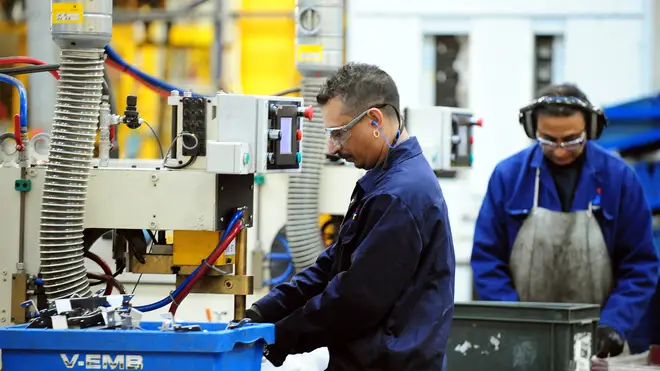
Ali Miraj 12pm - 3pm
3 October 2022, 11:14

The score of 48.4 in the S&P Global/CIPS UK Manufacturing PMI survey is a slight recovery from 47.3 in August – a 27-month low.
After growing every month since coming out of its pandemic downturn, the UK’s manufacturing sector has been tipped into a third monthly contraction sparked by soaring inflation.
A closely followed survey suggests that manufacturing activity in the country slowed again in September.
The 48.4 score in the S&P Global/CIPS UK Manufacturing PMI survey shows that the sector was in firm decline last month. However, it is a slight recovery from 47.3 in August – a 27-month low.
Anything below 50 is considered a contraction in the sector.
Manufacturers told the surveyors that their customers are postponing or cancelling orders due to rising uncertainty, inflation and the cost-of-living crisis.
“Manufacturing businesses continued to feel an autumnal chill in September as declining sales, higher costs and a depressed marketplace pulled the sector down into contraction for a third month in a row,” said John Glen, chief economist at the Chartered Institute of Procurement & Supply (CIPS).
“Supply chain managers were buying less as customers either failed to place orders or cancelled work in hand.”
He said that problems at the port of Felixstowe had weighed on exports, which contracted at the quickest pace since May 2020. Demand was lower from the US, the EU and China, survey respondents said.
Rob Dobson, director at S&P Global Market Intelligence, said: “The downturn in UK manufacturing continued at the end of the third quarter, meaning the goods producing sector looks set to have acted as a drag on GDP (gross domestic product).
“Manufacturers have once again cut back production as new order intakes declined for the fourth successive month.
“Factories are reporting tough market conditions both at home and abroad.
“Disappointingly, exports continue to fall despite the more competitive exchange rate.
“There was also less positive news on the price front, with rates of inflation in input costs and selling prices both picking up in September, linked in part to import costs rising due to the weaker pound.”